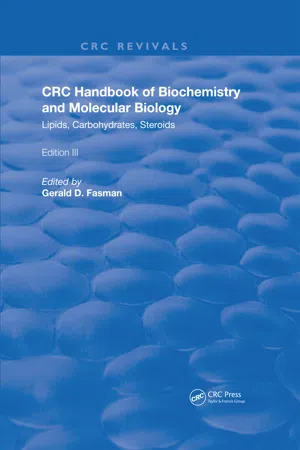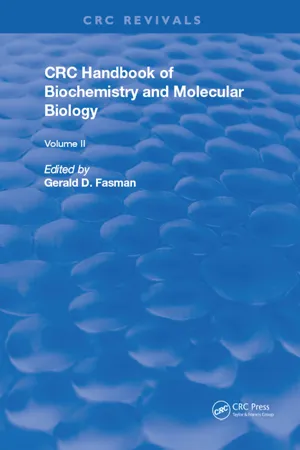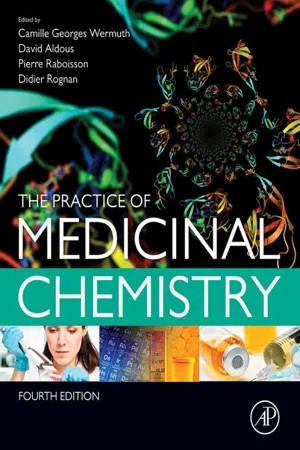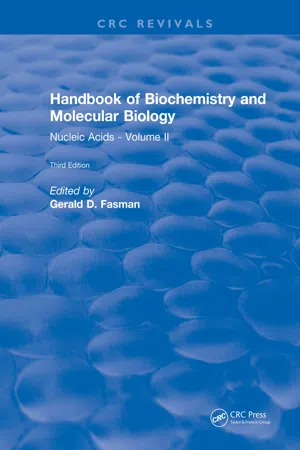Chemistry
IUPAC Nomenclature
IUPAC nomenclature is a set of rules and guidelines used to name chemical compounds systematically. It ensures that each compound has a unique and unambiguous name, allowing for clear communication among chemists. The nomenclature covers various types of compounds, including organic, inorganic, and coordination compounds, and is essential for accurately representing chemical structures and properties.
Written by Perlego with AI-assistance
Related key terms
Related key terms
1 of 4
Related key terms
1 of 3
6 Key excerpts on "IUPAC Nomenclature"
- eBook - ePub
- Caroline Cooper, Rupert Purchase(Authors)
- 2017(Publication Date)
- CRC Press(Publisher)
3 Nomenclature Fundamentals3.1 INTRODUCTIONThis and the following chapter are intended as a quick reference guide, and should not replace the International Union of Pure and Applied Chemistry (IUPAC) publications for definitive guidance nor the Chemical Abstracts Service (CAS) 2007 documentation for a full description of the current CAS nomenclature system.Naming compounds accurately is important for publication, and the mainstream chemical journals require systematic nomenclature of new compounds. However, a compound may have several equally valid names, and a name intelligible to a fellow organic chemist may not be appropriate for publication in, for example, fire regulations. The function of nomenclature is to provide an acceptable name for a given compound in a particular context.Substructure searching is now used extensively for the indexing and location of known substances. For many purposes, it is sufficient to be able to recognise from the name that the correct compound has been tracked down as a result of searching by substructure, molecular formula and so on.Before publication, all available information on products should be checked to make sure a compound being reported is in fact new. For synthetic compounds, a structure search can be carried out against Chemical Abstracts and Reaxys (see Sections 1.1.1 and 1.1.2 ).For newly isolated natural products, Dictionary of Natural Products is the best source (Section 1.2.1 ). Duplicating trivial names when reporting new natural products is to be avoided. Names should be checked against the Dictionary of Natural Products or CAS.Nomenclature algorithms are available to generate names from structure drawing programs (see Section 3.9 ).FURTHER READINGFox, R. B. and Powell, W. H., Nomenclature of Organic Compounds, Principles and Practice - eBook - ePub
Handbook of Biochemistry and Molecular Biology
Lipids Carbohydrates, Steroids
- Gerald D. Fasman(Author)
- 2019(Publication Date)
- CRC Press(Publisher)
The Commission at its meeting in Menton, May 7 to 8, 1971, has taken the view that the degree of uniformity envisaged in the Recommendations is highly desirable and therefore further recommends to all biochemical journals that the changes required should be made as soon as possible. The Commission recognizes that all journals will have to make some changes (in most cases these are minor) from their present established practices to implement these Recommendations in full. It considers that the possible objections of difficulties even for a commercial publisher with an established “house style” are outweighed by the advantage that conformity of style in the citation of references will prove to the authors, editors, and readers upon whom all journals depend for their existence.International Union of Pure and Applied ChemistryIUPAC Tentative Rules for the Nomenclature of Organic Chemistry Section E. Fundamental Stereochemistry *
Introduction
This Section of the IUPAC Rules for Nomenclature of Organic Chemistry differs from previous Sections in that it is here necessary to legislate for words that describe concepts as well as for names of compounds.At the present time, concepts in stereochemistry (that is, chemistry in three-dimensional space) are in the process of rapid expansion, not merely in organic chemistry, but also in biochemistry, inorganic chemistry, and macromolecular chemistry. The aspects of interest for one area of chemistry often differ from those for another, even in respect to the same phenomenon. This rapid evolution and the variety of interests have led to development of specialized vocabularies and definitions that sometimes differ from one group of specialists to another, sometimes even within one area of chemistry.The Commission on the Nomenclature of Organic Chemistry does not, however, consider it practical to cover all aspects of stereochemistry in this Section E. Instead, it has two objects in view: To prescribe, for basic concepts, terms that may provide a common language in all areas of stereochemistry; and to define the ways in which these terms may, so far as necessary, be incorporated into the names of individual compounds. The Commission recognizes that specialized nomenclatures are required for local fields; in some cases, such as carbohydrates, amino acids, peptides and proteins, and steroids, international rules already exist; for other fields, study is in progress by specialists in Commissions or Subcommittees; and further problems doubtless await identification. The Commission believes that consultations will be needed in many cases between different groups within IUPAC and IUB if the needs of the specialists are to be met without confusion and contradiction between the various groups. - eBook - ePub
Handbook of Biochemistry
Section A Proteins, Volume II
- Gerald D Fasman(Author)
- 2018(Publication Date)
- CRC Press(Publisher)
At the present time, concepts in stereochemistry (that is, chemistry in three-dimensional space) are in the process of rapid expansion, not merely in organic chemistry, but also in biochemistry, inorganic chemistry, and macromolecular chemistry. The aspects of interest for one area of chemistry often differ from those for another, even in respect to the same phenomenon. This rapid evolution and the variety of interests have led to development of specialized vocabularies and definitions that sometimes differ from one group of specialists to another, sometimes even within one area of chemistry.The Commission on the Nomenclature of Organic Chemistry does not, however, consider it practical to cover all aspects of stereochemistry in this Section E. Instead, it has two objects in view: To prescribe, for basic concepts, terms that may provide a common language in all areas of stereochemistry; and to define the ways in which these terms may, so far as necessary, be incorporated into the names of individual compounds. The Commission recognizes that specialized nomenclatures are required for local fields; in some cases, such as carbohydrates, amino acids, peptides and proteins, and steroids, international rules already exist; for other fields, study is in progress by specialists in Commissions or Subcommittees; and further problems doubtless await identification. The Commission believes that consultations will be needed in many cases between different groups within IUPAC and IUB if the needs of the specialists are to be met without confusion and contradiction between the various groups.The Rules in this Section deal only with Fundamental Stereochemistry, that is, the main principles. Many of these Rules do little more than codify existing practice, often of long standing; however, others extend old principles to wider fields, and yet others deal with nomenclature that is still subject to controversy.Rule E-0The stereochemistry of a compound is denoted by an affix or affixes to the name that does not prescribe the stereochemistry; such affixes, being additional, do not change the name or the numbering of the compound. Thus, enantiomers, diastereoisomers, and cis–trans - eBook - ePub
Water Quality Data
Analysis and Interpretation
- Arthur Hounslow(Author)
- 2018(Publication Date)
- CRC Press(Publisher)
The primary problem faced by hydrogeologists and other non-chemist environmental scientists in discussing organic pollutants is twofold. First, many have not had a formal course in organic chemistry, and second, the large number of names that may be used to refer to one compound is confusing. The latter problem is further complicated by the fact that acronyms and trade names are used frequently.Many organic compounds that have been known for a long time have one or more common names: an older systematic name and a more modern systematic (IUPAC) or Chemical Abstracts (CAS) name. Also, most complex compounds such as pesticides are referred to by common names or trade names because of the complexity of their systematic name and also for marketing purposes.One may compare the naming of a person and an organic compound as follows:Person Organic compound Bluey Common name PERC Bill Smith Semisystematic name Perchloroethylene William A. Smith Systematic name Tetrachloroethene SS# 123-45-6789 Unique number CAS # 127-18-4 The systematic name of an organic chemical is the International Union of Pure and Applied Chemistry name, or IUPAC name, and the number is the Chemical Abstracts System number. Most of the rest of this chapter will be devoted to the methods whereby systematic names may be derived. Common names and some semisystematic names will be noted in the following discussion. Because the key to most of the chemical literature is the Chemical Abstracts System, one must be able to locate the chemical of interest in these abstracts. For on-line searches the CAS number is of major importance. For paper searches the name used by Chemical Abstracts is important. This is usually, but not always the IUPAC name.Chemical Abstracts Registry Numbers
All new substances in the CAS database are given registry numbers. Each is a unique identification number, which overcomes the problem common in organic chemistry of a substance having many different names. The number has up to nine digits separated by hyphens into three groups. The first part of the number, starting from the left, has up to six digits, the second part two digits, and the third and final part a single check digit (Schulz, 1988). - eBook - ePub
- Camille Georges Wermuth, David Aldous, Pierre Raboisson, Didier Rognan(Authors)
- 2015(Publication Date)
- Academic Press(Publisher)
In practice, this means that the number of trade names in one country is usually much higher than the number of active drug substances marketed and used. Nonproprietary names, also called generic or common names, are intended to be used as public property without restraint, that is, nobody should own any rights on their usage. These names are usually designated by national or international nomenclature commissions. Both trade names and nonproprietary names are normally published first in the form of proposals. Comments may be made and objections raised for a certain time period before final publication. Although nonproprietary names and trade names may appear similar in form to an outsider, there is, in fact, a big difference. First, nonproprietary names are designations to identify the active pharmaceutical drug substance rather than the final product. Secondly, the selection of a nonproprietary name follows established rules so that the name itself communicates to the medical and pharmaceutical health professional information about the therapeutic or pharmacological group to which the active drug substance belongs.III Drug Nomenclature
A INNs for Pharmaceutical Substances
1 History
During the twentieth century, the rapid development of pharmaceutical chemistry has brought with it the need to identify large numbers of active drug substances by unique, universally available, and accepted names. The systematic chemical name, codified by international bodies including the International Union for Pure and Applied Chemistry (IUPAC) and International Union of Biochemistry (IUB), has the advantage of unambiguously defining a specific chemical substance, but it is often very long, difficult to memorize, and practically incomprehensible for the nonchemist. Moreover, it gives no indication as to the therapeutic action of the substance.In order to avoid citation of difficult chemical names, generic names were created. In the beginning, however, different names were independently assigned to the same substance in different countries. For example, acetaminophen, N -(4-hydroxyphenyl) acetamide, 40-hydroxyacetanilide, p -acetamidophenol, N -acetyl-p-aminophenol, acetaminophen, and paracetamol are the same substance (see Figure 34.2 - eBook - ePub
Handbook of Biochemistry
Section B Nucleic Acids, Volume II
- Gerald D Fasman(Author)
- 2019(Publication Date)
- CRC Press(Publisher)
At the present time, concepts in stereochemistry (that is, chemistry in three-dimensional space) are in the process of rapid expansion, not merely in organic chemistry, but also in biochemistry, inorganic chemistry, and macromolecular chemistry. The aspects of interest for one area of chemistry often differ from those for another, even in respect to the same phenomenon. This rapid evolution and the variety of interests have led to development of specialized vocabularies and definitions that sometimes differ from one group of specialists to another, sometimes even within one area of chemistry.The Commission on the Nomenclature of Organic Chemistry does not, however, consider it practical to cover all aspects of stereochemistry in this Section E. Instead, it has two objects in view: To prescribe, for basic concepts, terms that may provide a common language in all areas of stereochemistry; and to define the ways in which these terms may, so far as necessary, be incorporated into the names of individual compounds. The Commission recognizes that specialized nomenclatures are required for local fields; in some cases, such as carbohydrates, amino acids, peptides and proteins, and steroids, international rules already exist; for other fields, study is in progress by specialists in Commissions or Subcommittees; and further problems doubtless await identification. The Commission believes that consultations will be needed in many cases between different groups within IUPAC and IUB if the needs of the specialists are to be met without confusion and contradiction between the various groups.The Rules in this Section deal only with Fundamental Stereochemistry, that is, the main principles. Many of these Rules do little more than codify existing practice, often of long standing; however, others extend old principles to wider fields, and yet others deal with nomenclature that is still subject to controversy.Rule E-0
The stereochemistry of a compound is denoted by an affix or affixes to the name that does not prescribe the stereochemistry; such affixes, being additional, do not change the name or the numbering of the compound. Thus, enantiomers, diastereoisomers, and cis—trans
Index pages curate the most relevant extracts from our library of academic textbooks. They’ve been created using an in-house natural language model (NLM), each adding context and meaning to key research topics.
Explore more topic indexes
Explore more topic indexes
1 of 6
Explore more topic indexes
1 of 4





